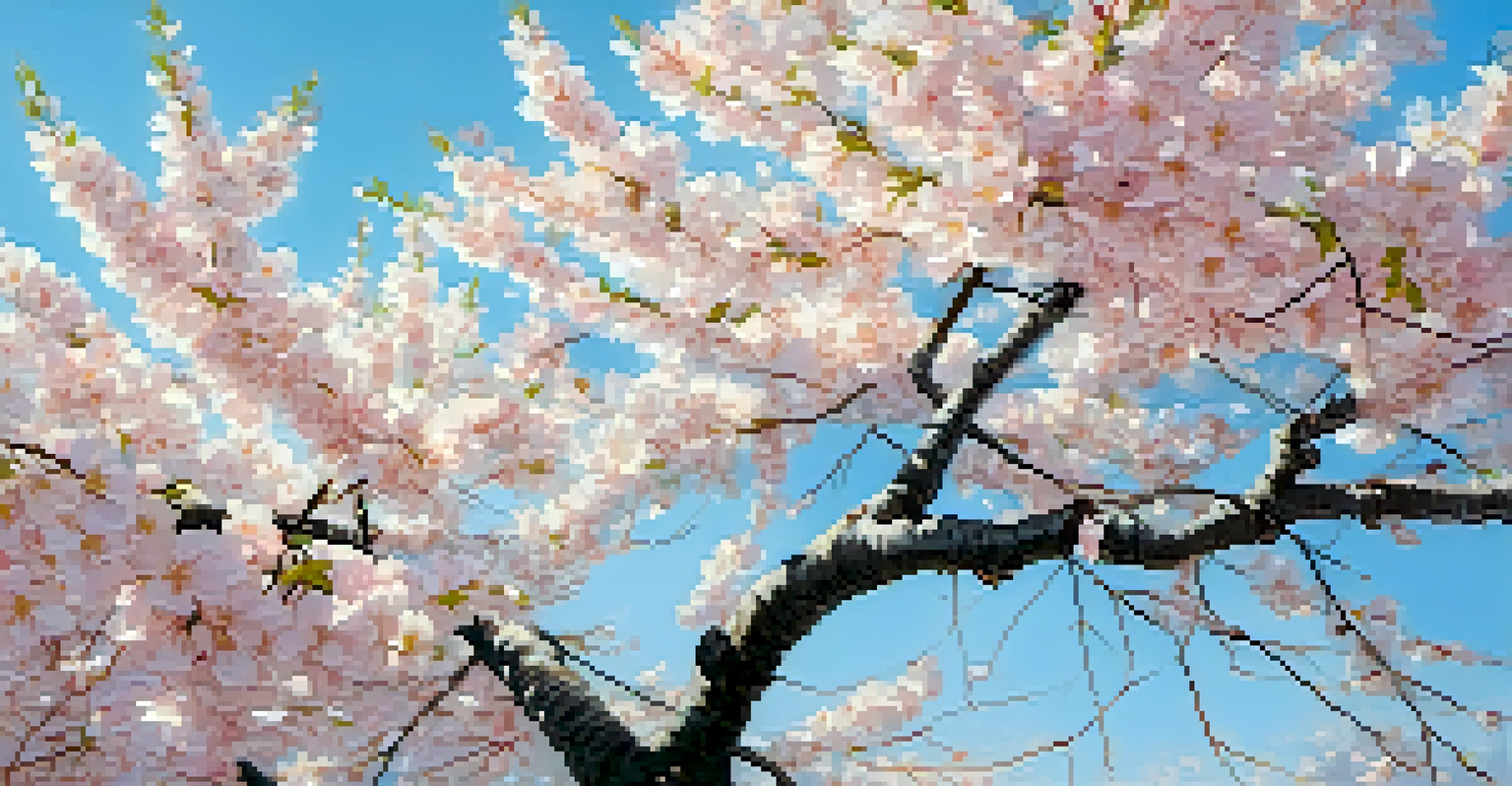Understanding Different Tree Species and Their Unique Features

The Importance of Trees in Our Ecosystem
Trees play a vital role in maintaining ecological balance. They provide oxygen, improve air quality, and enhance biodiversity. Each species contributes uniquely to its environment, serving as habitat for various wildlife.
The best time to plant a tree was twenty years ago. The second best time is now.
For instance, oak trees are known for their strength and longevity, providing shelter for birds and insects. Meanwhile, willows thrive near water bodies, offering crucial support to local aquatic ecosystems. Understanding these relationships helps us appreciate the complexity of nature.
Moreover, trees help in soil conservation by preventing erosion and maintaining nutrient levels. By learning about different tree species, we can better appreciate their roles and advocate for their preservation.
Deciduous Trees: Changing with the Seasons
Deciduous trees are known for their seasonal transformations. These trees shed their leaves in autumn, creating a stunning display of color before entering a dormant phase in winter. This process is not just beautiful; it’s a survival strategy to conserve water and energy during harsh conditions.

Examples of deciduous trees include maples and birches, both of which offer vibrant fall foliage. The sugar maple, in particular, is famous for its brilliant red and orange leaves. This seasonal change not only attracts nature enthusiasts but also plays a crucial role in nutrient cycling.
Trees Enhance Ecosystem Health
Trees play a crucial role in improving air quality, supporting biodiversity, and conserving soil.
In spring, these trees burst back to life, showcasing fresh green leaves and beautiful blossoms. This renewal symbolizes resilience and is a reminder of nature's cyclical patterns.
Evergreen Trees: Year-round Greenery
Evergreen trees, as the name suggests, retain their foliage throughout the year. These trees are often associated with strength and endurance, providing a constant source of greenery even in the coldest months. Their needle-like leaves are adapted to withstand harsh weather conditions, making them resilient.
He that plants trees loves others besides himself.
Common examples include pine, spruce, and fir trees. The scent of pine, especially around the holidays, evokes a sense of nostalgia and warmth. Beyond aesthetics, evergreens play a critical role in stabilizing soil and providing habitat for wildlife.
Additionally, these trees contribute to carbon sequestration, helping to combat climate change. Their ability to photosynthesize year-round makes them invaluable allies in maintaining a healthy environment.
Fruit Trees: Nature's Bounty
Fruit trees are not only a source of nourishment but also add beauty to our landscapes. Varieties like apple, cherry, and citrus trees provide delicious fruits while also attracting pollinators like bees. Their blossoms in spring offer a feast for the eyes, turning gardens into vibrant showcases.
These trees require specific care and conditions to thrive, including proper pruning and soil management. For instance, apple trees benefit from cross-pollination, which enhances fruit production. This interaction highlights the interconnectedness of tree care and ecosystem health.
Understanding Tree Species is Key
Knowledge of different tree species' needs ensures better care, health, and longevity of our trees.
Harvesting fruit from these trees can be a rewarding experience, connecting us to the cycles of nature. By planting and nurturing fruit trees, we can promote sustainable practices and enjoy the fruits of our labor.
Shade Trees: Comfort in the Heat
Shade trees provide essential relief from the sun, making outdoor spaces more enjoyable. These trees can significantly reduce temperatures in urban areas, improving overall comfort during hot summer months. Their broad canopies create natural shelters, inviting people to relax and enjoy their surroundings.
Popular shade trees include oaks and maples, known for their expansive branches and dense foliage. Beyond comfort, these trees help in energy conservation by lowering cooling costs for homes and buildings. Their presence can even enhance property values, making them a wise investment.
Moreover, shade trees contribute to air quality by filtering pollutants and absorbing carbon dioxide. By planting these trees, we not only enhance our living spaces but also support environmental sustainability.
Ornamental Trees: Beauty and Aesthetics
Ornamental trees are primarily planted for their aesthetic value, adding beauty and character to gardens and parks. Varieties like Japanese cherry blossoms and magnolias are celebrated for their stunning flowers, often becoming focal points in landscaping designs. These trees enhance visual appeal and create serene environments.
Their unique shapes, colors, and sizes allow for creative planting options, making them popular choices for both residential and commercial properties. Additionally, ornamental trees can attract wildlife, such as birds and butterflies, enriching local ecosystems.
Conservation is Vital for Future
As urbanization increases, community efforts in tree conservation are essential for preserving these vital resources.
While their primary purpose is beauty, these trees also contribute to urban biodiversity. By incorporating ornamental trees into our landscapes, we foster a deeper connection with nature and promote ecological health.
Understanding Tree Species for Better Care
Each tree species has its own unique needs in terms of care and maintenance. Understanding these requirements is crucial for ensuring their health and longevity. For instance, some trees may thrive in specific soil types or require particular amounts of sunlight and water.
By educating ourselves on the characteristics of various species, we can make informed decisions when planting and caring for trees. This knowledge helps prevent common issues such as root rot or nutrient deficiencies, ultimately leading to healthier trees.

Moreover, being mindful of local ecosystems allows us to select species that will thrive in our area. This thoughtful approach not only benefits the trees but also enhances the overall landscape and biodiversity.
The Future of Trees: Conservation and Awareness
As urbanization continues to expand, the conservation of tree species is more important than ever. Many trees face threats from climate change, pests, and habitat loss. Raising awareness about the significance of trees can inspire communities to take action in preserving these vital resources.
Community initiatives, such as tree planting events and educational programs, play a key role in fostering a culture of conservation. By involving local residents, we can create a sense of ownership and responsibility towards our natural environment.
The future of trees depends on our collective efforts to protect and nurture them. By understanding different tree species and their unique features, we can advocate for their preservation and ensure that future generations enjoy the beauty and benefits they provide.